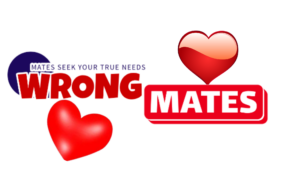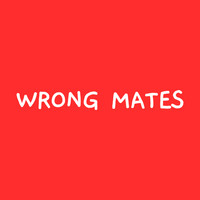
The sense of self is the most basic aspect of an individual’s way of being in the world. Early in life, children come to understand this fundamental fact about their existence. Even as their bodies and minds undergo rapid growth, the idea of being “me” remains a constant. By the time individuals reach adolescence, the sense of self expands as they explore such questions as what they value and what direction they want their lives to take.
Every once in a while, you may find yourself raising these questions. Your busy life may not afford you the luxury of taking the time to ponder your life goals, but in the midst of everything, something or someone may prompt you to take a step back and wonder if you are living your best life.
Perhaps you’ve been rummaging around in a drawer full of clutter from your past. A card that you saved from a friend peeks out at you, and you become flooded with memories of what the two of you used to dream up during your teen years. Are you realizing those dreams now, or do you wish your life had gone differently?
What Is the Self, Anyway?
University of Bath’s Emily Hards and colleagues (2024) ask this question in their comprehensive review of decades of research and theory on the self. As they note at the outset, “The self is notoriously difficult to define; it is a complex and differentiated construct with no clear, universal definition.” Proceeding from this pessimistic observation, Hards et al. decided that it’s time for a “parsimonious understanding” by mapping the diverse areas within psychology that address the notion of self into major unifying themes.
No small undertaking, the U. Bath authors delved into six subareas of psychology in search of definitions, theories, and empirical evidence that would help them consolidate the many terms out there in the literature into an organized framework.
5 Domains of the Self
The original six domains that Hards and her colleagues incorporated into their analysis included neuroscience, but this field was ultimately deleted from the final set, leaving these five:
- Social: How you are viewed by others and how the social environment defines you in any given situation including your roles in that situation such as whether you are at work or at home.
- Developmental: Pathways through life, particularly in adolescence, define your identity, including the way you integrate your multiple roles. Reflected appraisals, or the way you compare yourself to others, further influence your identity.
- Cognitive: Mental representations of the self or “schemas,” autobiographical memories, and ideas about “me as a person.” Most important to these representations are the memories that are associated with late adolescence and early adulthood (the “reminiscence bump,” as it is called). Your looking back at that card from your friend would fit into this category.
- Personality: The self is personality, or the “entirety of an individual.” The story you tell about your life continues to build on this sense of yourself over time as you weave past events into a coherent narrative.
- Clinical: Specific disorders are linked to disturbances in sense of self. For example, the “cognitive triad” of depression includes negative representations of the self, the future, and the world. These negative views color the way that individuals interpret their experiences.
As you may have concluded from reading these sets of definitions, there is some overlap. Indeed, as the British research team concluded, it’s possible to draw a number of arrows linking related ideas within each subdiscipline. Your life story is in part cognitive and in part related to personality. Other concepts, such as what is called your “core self-evaluation” or self-esteem, are both developmental in nature and a component of personality.
Summing It Up: What Do We Know That We Didn’t Before?
Given the goal set forth by the authors, their analysis does help to consolidate what might be considered a wild world out there in the proliferation of terms that attempt to define whatever this thing called the self might be. It is indeed complex, as the authors observe at the beginning of their journey, but that seems to come with the territory.
You might find all of this terminology and cross-referencing to be nothing more than a semantic game, however—one that psychologists like to play when they generate jargon to describe commonsense ideas. However, there is value in cleaning house across these multiple perspectives within the field.
From a research point of view, in the words of the authors, “we suggest that discipline-specific self-terms should be avoided wherever possible as this adds to the confusing landscape of the self-literature.” If you follow this literature out of your own personal interest, the Hards et al. paper provides a nice roadmap. Whether you read the work of Erik Erikson (developmental) or Aaron Beck (clinical), it can be helpful to realize that they are writing about similar ideas even though one calls it “identity” and the other a “cognitive triad.”
Thinking back on your own life story, putting past events into a coherent narrative can, furthermore, help you see them as part of an integrated whole even though some events might not fit all that neatly. Perhaps you didn’t follow through on the dreams of your youth, but there can be some pretty good reasons for this. You didn’t complete the educational program you thought you would, have the family you anticipated, or have the fabulous lifestyle you once imagined. Look at where you did end up instead. Maybe it was all for the best. Or maybe there’s still time to accomplish some of those goals.
To sum up, these five perspectives on the self can help you gain insight into where your life has been and how, in the future, you can reach the fulfillment that comes from this self-knowledge.

